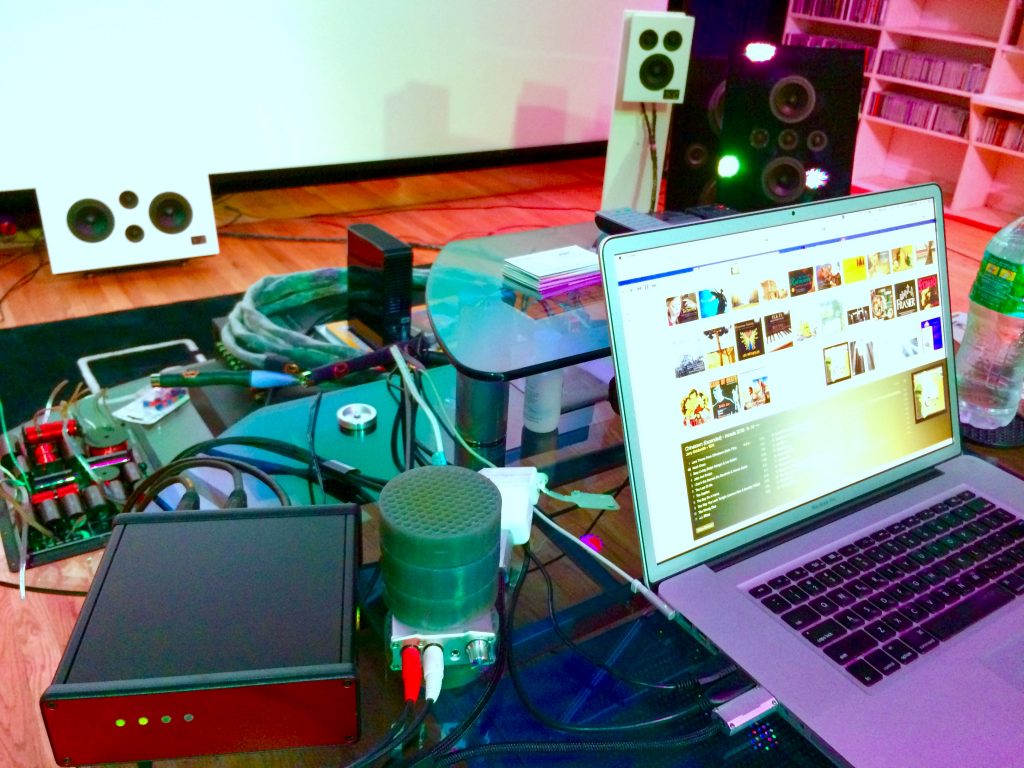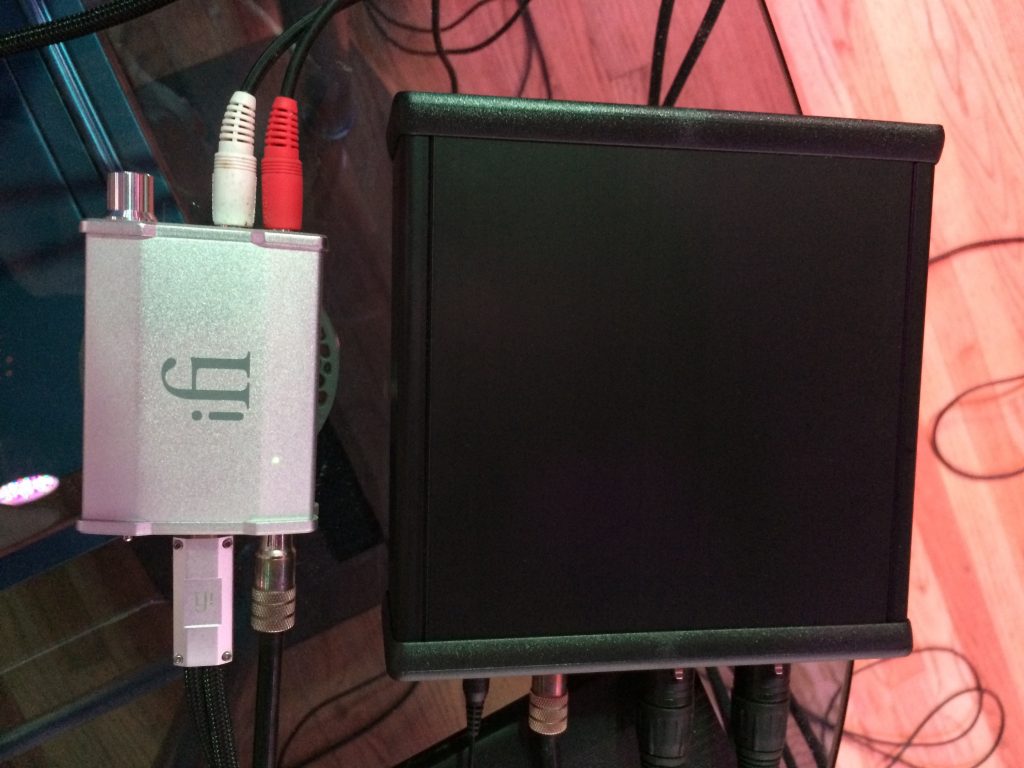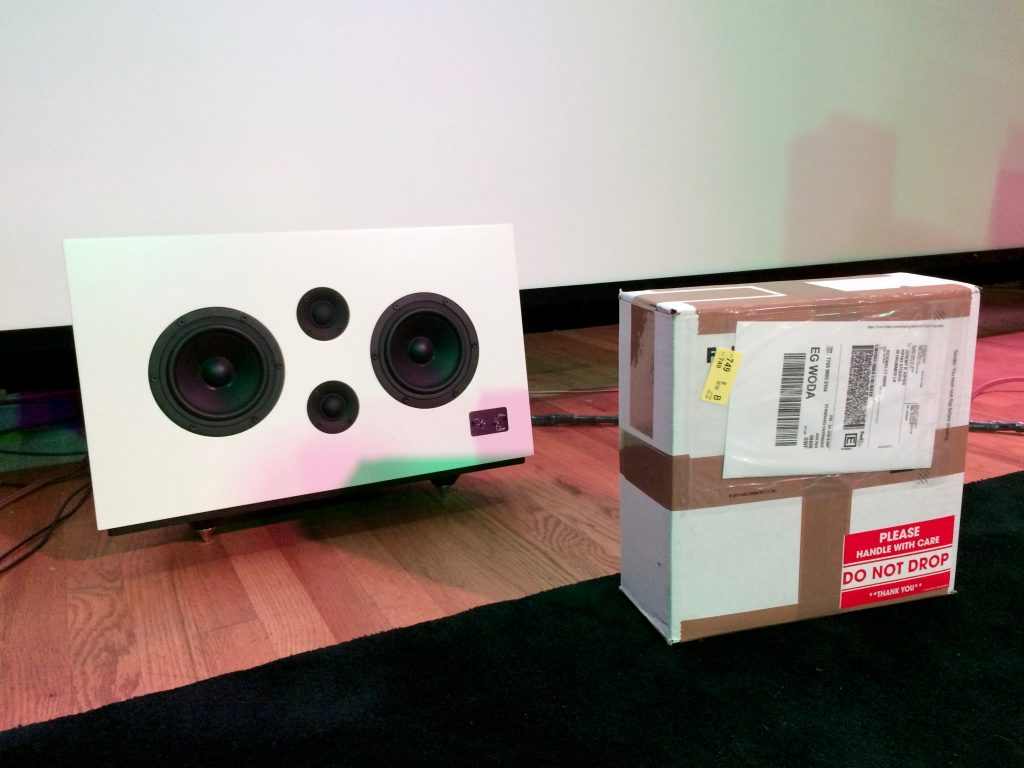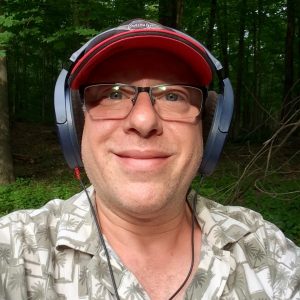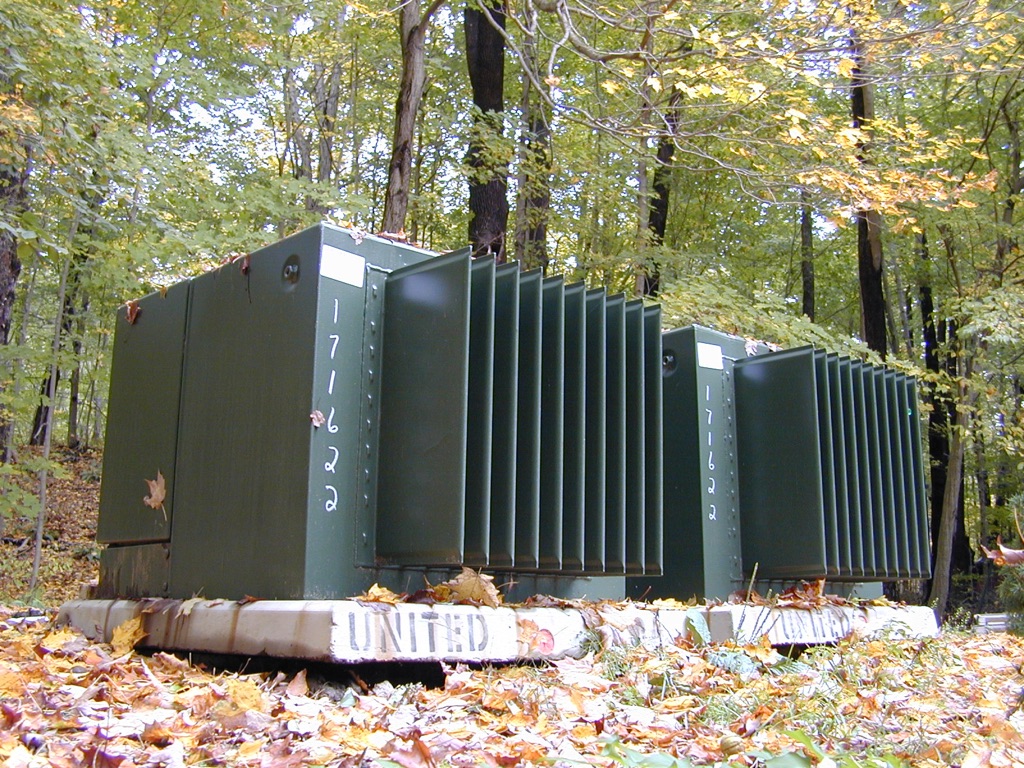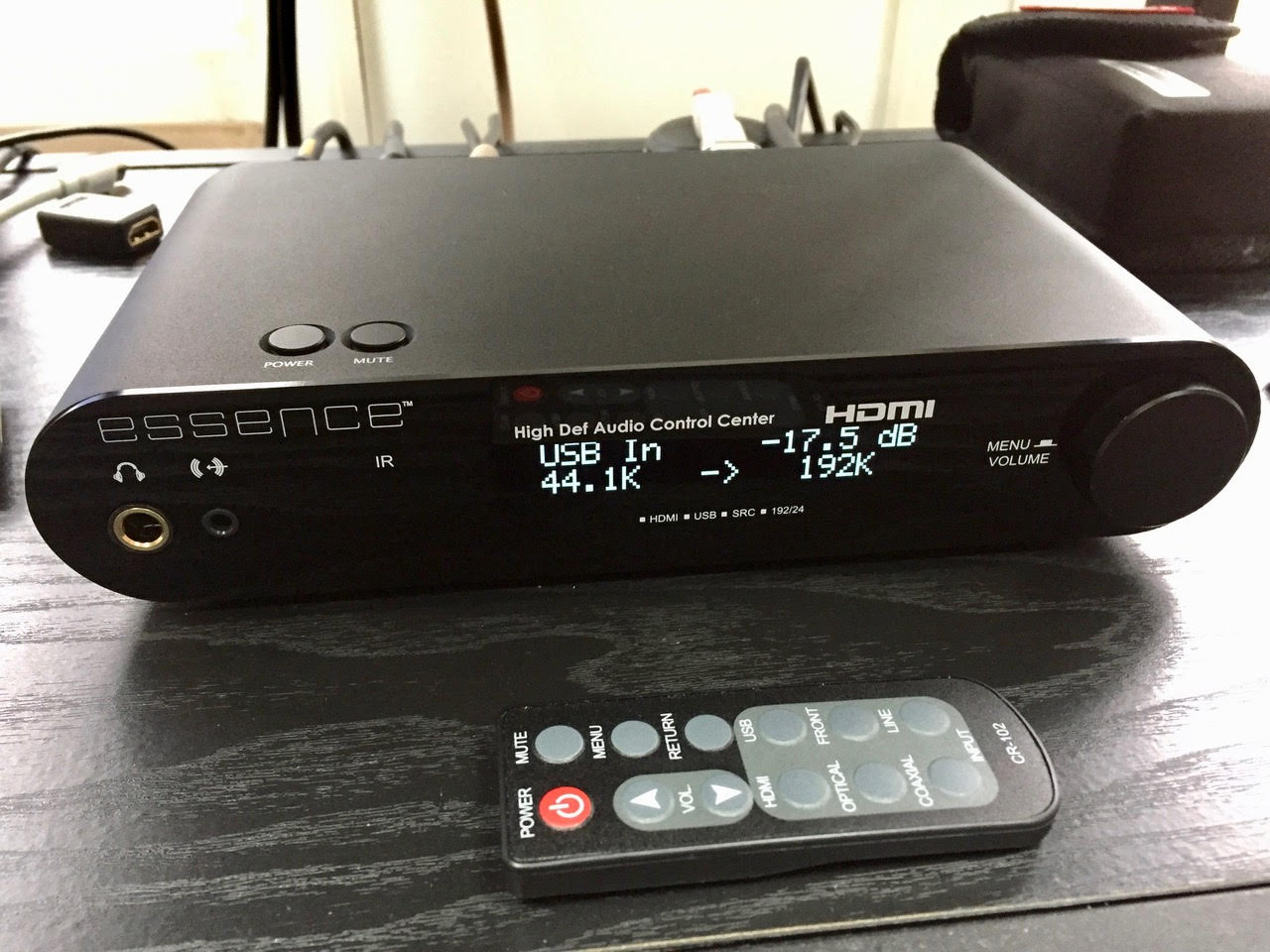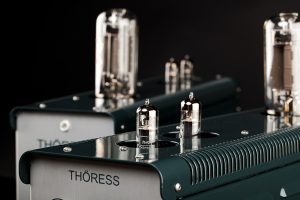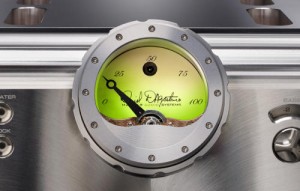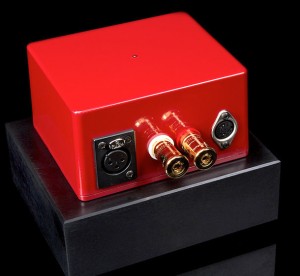"On a cost vs. sound quality basis (alone), Digital Amplifier Company DAC DAC may be the best digital to analog converter to come along in 3 decades; all the way back to the extremely costly & extraordinary $12,000 Stax DAC-X1t Vacuum Tube Output Reference D/A Processor (1989)!"
Introduction
There are an extremely wide range of choices available to audiophiles these days when it comes to decoding digital audio sources; from a stream of numerical values consisting of only 1 or 0, a usable analog sound must be synthesized, filtered, and amplified before playback can occur on either speakers or headphones. I've been lucky enough to listen to the lion's share of DACs over the decades since digital audio first appeared in the home as a source for music, as early as Spring of 1983 when Sony rolled out its first Compact Disc (CD) Player: the CDP-101. In particularly, I have been involved, first as a hobbyist but then as a producer and recording engineer, working for Chesky Records beginning in the Summer of 1990 (with their engineer: Bob Katz); the label (and it's spin offs) whose ultimate point is sound quality and believability in audio reproduction. The DACs have included both the great, ordinary, as well as the mundane, and every sort of product found in between, such as those located in most CD, DAT, MD, DVD-Audio, SACD, BD Players and modern streaming network portable and home-based audio/video systems; I've also spent considerable recording and listening time with even the super exotic discrete ladder DACs made from laser trimmed hand-made resistor networks, 1-bit pulse width modulation (PWM), combinations of these two different technologies, and the more recent forays into DSD upsampling systems. Each approach has its own strengths and weaknesses, as befit any category of serious and intense study or manufacture.
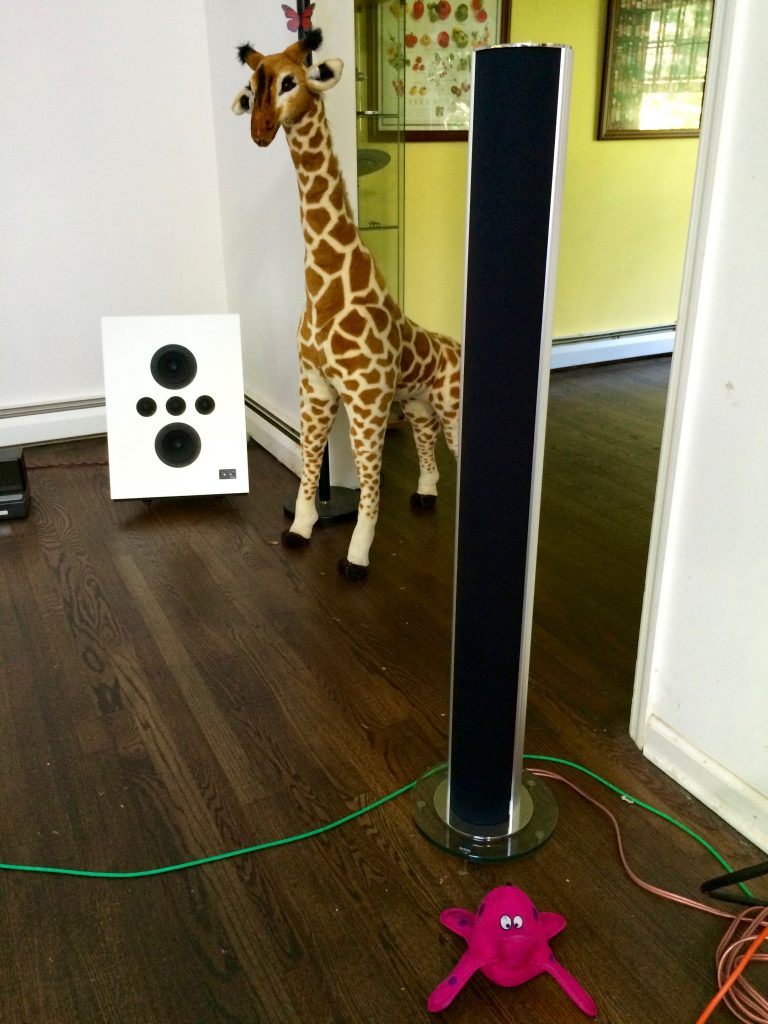
Some of the examples which have crossed my recording, editing, and reviewing desk over the years include standouts from AMR (Abbingdon Music Research), Apple, Audio Research, Benchmark, Cambridge, Chord, iFi, Hewlett Packard, Manley (VTL), Mytek, Nagra, North Star Design, Oppo, Pacific Microsonics, Panasonic, PS Audio, Sony, Schitt Audio, Stax, Teac, Wadia… the list is enormously long! And now, seemingly out of nowhere comes the newest one... from Tommy O'Brien and his Digital Amplifier Company, the DAC DAC; sounding a little like the Martian speak in Tim Burton's hilarious send-up to Sci-Fi movies of the 1950's Mars Attacks (released 20 years ago… in 1996—and which features an amazingly dynamic, detailed, and three-dimensional audio mix). As with Tommy's other products, including a number of interstellar class-D amplifiers (under the Maraschino Cherry badge) that blow the doors off the rest of the amplification community both old and new (I'm currently reviewing his latest iteration—the Gold version), the kernel of his new Digital-to-Analog converter design came from the desire to go beyond what others had done up to this point using a largely, all new approach to digital signal reconstruction; the least number of components in the signal path (or in the power supply) possible, whether analog or digital—the simple goal: the Shortest audio path! This (somewhat surprisingly) allows for unique subtleties of instrumentation, mixing, spatial cues, acoustic reverberation, and plain simple musicality to shine through on their own merits as the recording and production teams of every quality album or song intended. And while this may seem like more mere hyperbole in a world where every little trick has been researched and exploited to death and which comes around again and again with a new name or gimmick attached to it, this man really knows how to try something (ostensibly) new and get it right … the first time (more on this, later)!
Part 1 (The HS – High Spec version)
After a couple of months living with and reviewing Tommy's most recent all digital Class-D amplification, the Golden King Maraschino Cherry Monoblocks (800W into 2Ω, 400W into 4Ω, 200W into 8Ω—review to follow soon), I eagerly requested a review sample of DAC DAC (MSRP $1290) to compare with the long list of gear I've used to create some of my (and others) most amazing sounding recordings… albums where you can feel the room, the musicians, the instruments, and the music making directly and most immediately like it were live; right there in your listening room. I've created these recordings using (strangely in this over processed world of media hype) the least number of microphones I can possibly get away with; thus preserving the intrinsic acoustical information often found in good live settings where one can be seated ideally proximate to the music making. This is different for every type of music and location, but what remains is the same is the feeling one gets when listening to music live; something known as a musical frisson (coined most recently by my friend Bob Rapoport at Essence Electrostatic): the feeling our bodies involuntarily experience and communicate through a physical and emotional reaction consisting of waves of goosebumps running up the back of one's neck, the tops of the legs, and along the forearms in combination with a brief but intense period of pleasure, euphoria and blissfulness! The definition of the word: fris·son, frēˈsôn / noun—a sudden strong feeling of excitement or fear; a thrill. "a frisson of excitement"
In unpacking the new DAC (again, the HS model in comparison to the TL version—review coming in Part 2), the first thing I noticed was just how small and lightweight the DAC DAC is in comparison to my much larger full-size components and most of the other DACs or digital audio players on hand (except for the diminutive and ever loving portable iFi Nano). This is because it comes in what amounts to ¼ rack space plain plastic box with a red front panel containing a mere four indicator lights (for power, signal lock, and incoming sampling frequency); this is the same enclosure as Tommy uses for his Maraschino Cherry Amplifier's power supply—and it reminded me very much of the digital format converter that Bob Katz had originally created to change Toslink Optical, AES/EBU, and S/PDIF Coaxial digital signals back and forth; this was back in 1990 at his Digital Domain Studio in the upper East side of New York City and long before such professional and later consumer devices were ever deemed necessary. While DAC DAC offers an extremely basic rectangular box of 6.5" x 6.5" x 2.0" with absolutely no-frills whatsoever (not even a volume control nor a logo or other markings printed on the outside), it completely avoids the expense and dubious quality associated with any fancier cabinetry or markings, often made of lustrous metals, exotic woods, Gold paint, and frequently non-essentials to the audio fidelity that is actually being presented (and paid for). The only apparent excess (which I considered a nice touch) were the 4-Sorbothane feet on the bottom.
On the other hand, the DAC DAC is considerably larger than the iFi Nano (2.5" x 4" x 0.75"), which is both portable, pocket sized, and self powered in addition to having a volume control, USB-B input, headphone jack (3.5mm), and line-level output (on RCA jacks). Another thing I noticed immediately was that there is only a single coaxial digital S/PDIF input, without any type of USB or Toslink optical inputs much less AES/EBU or ST/AT-Glass Optical interface (first utilized in 1992 by Theta Digital in it's Generation 2 and 3 DACs and their dedicated transport: the Theta Data). This naturally limits the source of the digital signals one can play straight up to CD and SACD players (plus many digital receivers) with a coaxial digital output; so an outboard digital format converter or other source translator is required. I chose to initially use the USB to Coaxial S/PDIF output from the iFi Nano but later switched to a professional format converter from Lexicon for this purpose.
Also of important note… there is only one left/right AES/EBU balanced output, with no unbalanced outputs on RCA connectors (multiple outputs seem more typical in consumer products, these days and on and off for the last 33 years since CD players first came out), which may again require an external adapter in order to be usable with conventional unbalanced preamps or the great majority of consumer analog amplifiers, which normally only feature RCA Left/Right input connectors. I chose to use Mogami M2534 microphone cable to begin with but would eventually move on to Skogrand hand-made Markarian 421 balanced interconnects—some of the finest sounding cables at any price. Also in regular rotation for this review were AudioQuest, Cardas, Canare, Monster Cable, RCA, Radio Shack, and Straight Wire balanced cables of many varieties and age.
Lastly, there is no volume control on the DAC DAC as there is on the iFi Nano, PS Audio, and Theta Digital DACs. This necessitates either using an outboard volume attenuator (I initially used one made for me custom by Ultimate Attenuators in 1993 with all balanced connections and a single pair of laser trimmed resistors in the signal path. But I found it easier to control levels directly through several software based solutions where my laptop or Mac Mini were the source of the music. A balanced preamp, like the Audio Research LS-5B (1994) is also a great solution. But in future iterations of DAC DAC, it would be a fabulous option to have a 24-bit software controlled digital volume control on the front panel in order to make the unit more compatible with directly connected amplification to speakers; such as Digital Amplifier Company's Maraschino Cherry amps, which sound amazing because they espouse the same directness and shortness of signal path.
Listening
Initial listening revealed a significantly tighter, deeper and slightly louder bass than via listening to the iFi Nano (2nd Generation 2014). And a much better sense of resolution as the music decays into total and absolute silence than the PS Audio (3rd Generation PerfectWave PCM version 2013)! I played a large number of different albums through all 3 digital-to-analog converts, with music recorded over the past 50+ years since the beginning of commercial stereo recordings on magnetic tape (in 1954); many of them were audiophile favorites but just as many and more that were simply great music with a large variety of soundscapes and mixing protocols. This was in order to get a broad idea if Tommy's unique approach to electronic design (shortest signal path) was really working differently than the other DACs on-hand or had any particular personality of it's own which might obscure or alter the sound quality by imposing it's own character... a common problem in most electronics. What I discovered was that the DAC DAC has far less personality in comparison to any of them, a real shocker. For example, when comparing the Tommy's Digital Amplifier Company's (DAC) DAC to the David Manley (VTL), Stax X1, or Sound Designer II DACs… all of which are based on the Ultra Analog laser trimmed ladder DAC Modules from the late 1980's and early 1990's, it was immediately clear how DAC DAC was precisely portraying both a flatter frequency response with the extremes of bass and treble being much easier to hear minute details within. And also that the qualities of O'Brien's electronics and design approach seemed to convey an unusually coherent and focused soundstage that encompassed far more of musical spectrum and physical space in the recordings on audition than I was used to hearing from most DACs made in the last 10 years, including the various Benchmark, Mytek, Panasonic, Sony, and Schitt Audio converters and/or streaming audio players.
Initial listening revealed This resulted in Lalo Schifrin's soundtrack to the movie The Fox to reveal at once a slightly more forward soundstage that was in front of the speaker locations (regardless of which speakers were being heard; including B&W, B&O, Bose, Boston Acoustics, Cambridge SoundWorks, Ceratec, OLOGE Acoustic, Symdex, and Waterfall Audio) and also quite a bit wider in it's soundstage presentation than I had heard before. Of particular note the sound of the harp and flute passages revealed a tactile and almost visual presentation quality that was noticeably more three-dimensional and open (airy); with each of the musical instruments standing off of the background acoustic (ambiance) and any other instruments in the studio where it was recorded. Here again, the sound of the piano and cello playing were equally captivating, providing many rich details concerning the nature of each instrument that was substantially more revealing and inviting to listen to than at just about anytime in the recent past. I found myself cheering on the percussive qualities of the piano at the same time as I was able to appreciate the rosiny qualities of the bow drawing across the cello strings. As more and more members of the ensemble began to play, these small details were not lost but continued to be fleshed out equally in a very visceral and palpable fashion. It reminded me very much of the feeling I get (again and again) when hearing live acoustic music in the flesh; something which I had just availed myself of on two previous occasions in New York City, prior to beginning this review.
Like any (and all) new components that are under test and evaluation, here at my Kipnis Studios - KSS, I listen very closely to the presentation characteristics; looking and listening to discern the most minute and/or grand variations as a new component warms up and begins to burn-in. The DAC DAC began its cycle, initially, with a breathy stridency in the violins (and female vocals), But quickly (within minutes) this was replaced by warmth and individual qualities of violin (and vocals) rather than massing together into a total sound of a string section (or Chorus) made up of many members but sounding like only one big one. Delighted by this immediate improvement, I was invited to jump from one recording to another in quick succession in order to verify this warm-up pattern, which was significantly faster than most components I've run across in over 36 years. I owe this to the extreme simplicity and shortness of signal path that the music has to travel. And this was even more readily observed with the sound of muted brass; it's distinctive character consisting of rich harmonics sounding unique for each of the recordings I auditioned, rather than merely the sonic information of a muted brass instrument—yet always sounding the same regardless of recording.
The auditioning process went on and on to my great enjoyment, throughout the first afternoon and evening (and then many weeks thereafter), with me switching between my reference speakers… the Chinese designed German hand-made OLOGE Acoustic Model 5 ($6999) and the new German Ceratec Mk.4 (new Polished Chrome finish) Tower Speakers ($2499)—both equally audiophile and both capable of 40 - 25,000Hz reproduction. The longer I listened, the more I wanted to, because… and this is significant for any new piece of gear under test… it made the music come alive in both an intriguing and a compelling way; with the ending of one album leading to another and another and another! A recent acquisition to my collection is the big box set (5 CDs) produced by Film Score Monthly Magazine called TV Omnibus Volume One (2010)—and in particular disc number two which is composed by Dave Grusin from his fine work during 1972 and 1973; this is the same period in which he composed the score for Three Days of the Condor, one of my favorites. This jazz ensemble recording has been on my top ten list since I first opened the box set. As a studio soundtrack recording for television, the multi-track multi-microphone nature of the mix was immediately apparent, with each instrument occupying it's own relative space within the artificial acoustic overlaid around them. But this distinction was much more noticeable here than through any of the other DACs I had on-hand for comparison. Consequently, I was able to follow each individual line of the score with much greater attention and appreciation for the inter-harmonics and rhythmic nuance that occur as one instrument played with, alongside, and in back of the other instruments. It was riveting to listen to!
Switching to a recording I had been very closely involved with, I put on Clark Terry's Portraits from the Chesky Records label, here presented in a 96/24 PCM version available at HDtracks.com and sourced from the SACD of the same album. As I've mentioned before in these pages, this was the first recording that I was involved editing (with a razor blade) from the original analog ¼" 15 IPS stereo master tapes down into a form that created these digital files for the LP and SACD releases. Because of the extremely simple methodology which Bob Katz (the session engineer) used to capture this ensemble, the projection of sound is absolutely holographic and free of the speaker locations at all times. Featuring only a single stereo microphone (an AKG C24 in Figure-8 mode) with no artificial reverb or compression of any kind, this album remains a regular in my test line-up since it always makes it easy to tell what's going right and wrong with new and old gear alike. And so I was utterly amazed just how close this high-resolution digital file version was to the original analog master tapes I had edited back in 1990. I compared it against the LP Cut from the same master tape by Tim de Paravicini and the two sounded closer together than I have ever heard them before (nearly identical). I must say that the kind of intimate details of percussion, standup bass, piano, and (of course) trumpet were absolutely breathtaking to hear. There is nothing quite like having the pleasure and enjoying music of this type so many times in the past only to find oneself experiencing goosebumps regularly (musical frissons – more about this in a moment).
Enhancements
Many people often criticize iTunes (and other stock music file players on PC) for sounding either sterile or placing the listener at a distance from their music, often resorting to elaborate alternatives to get the most from their listening time. Using one of the many alternative music players to iTunes (on Mac but some are also available for PC), such as Channel D's Pure Music player, Audirvana+, and/or JRiver Media Center proved to make a substantial audible difference for my computer-based music playback. And here, with DAC DAC, the differences were even more pronounced than they had been in the past and with any previous DAC I've auditioned under these conditions. The differences were striking, with each software offering up certain distinct improvements over the stock iTunes players (or Windows Media) sound quality, producing a much clearer and more precise soundstage with greater apparent space, wider dynamics, and deeper musicality. For example, the qualities found in RCA Living Stereo's release of Tito Puente's Dance Mania (both the original CD issue and the special archival version that features added takes never before heard outside of this edition) produced vastly more detail in the vocals and the percussion instruments when played via any of these after-market softwares; leading to a much more convincing rendering of the music that was captured in the studio as well as the space and acoustic present between the musicians, in particular. Of these, JRiver was closest to the stock iTunes experience, followed by Channel D's Pure Music, and finally Audirvana+ coming out on top, sonically. The enhanced resolution was sufficient and repeatable so that I found myself wanting to listen longer and more seriously (without distraction or multi-tasking); every time I returned to just listening through iTunes (or WMP) by itself I yearned to go back to the after market software players.
Why should this be, I've wondered for years, since the digital audio is numerically the same and in each case the playback data is otherwise unaffected? My conjecture is that the digital audio data is required to spend time normally in a memory buffer that is often asynchronously clocked out to the outboard DAC (within the cycle of a single frame at normal sampling rate), producing a higher relative level of clock jitter which results in a clearly audible degradation to depth, width, and dynamics in contrast to any of the aftermarket choices. This clock jitter results in a softening of the instrumental, vocal, and timbrel textures that mutes the overall experience emotionally; causing most songs to sound less precise, dynamic, and immediate than the should. Such differences must be understood to be more and more audible given really stellar sounding recordings played back on the best equipment. But much more easily given a playback system whose qualities include both a balanced and well adjusted sound recreation that is achieved through a symbiosis of both the components and the listening environment and it's acoustic signature.
To this end, having a quiet listening environment (like my dedicated mastering facility: The Kipnis Studio Standard (KSS)… free of audible sounds of any kind... proved to be the best place to examine and appreciate both the add-on music players and the DAC DAC since I could most easily hear and identify changes to all aspects of the playback fidelity. Taking a listen to the LP of the movie soundtrack to Blake Edward's 10 by Henry Mancini was extremely revealing in my digital transfer from both the ELP Laser Turntable as well as my standard Technics SP-15 w/ SME 3009 mk. 3 arm, special Shure V15-Type 5MRx cartridge feeding the original Audible Illusions tube RIAA Phono preamp. Both the quality of the surface noise as well as the size, shape, depth, width and height of the soundstage were effected; more so than I have ever heard clearly from another DAC. And these differences contributed enormously to my satisfaction listening to this 36 year old recording. Interestingly, the ELP Laser Turntable version offered a wealth of musical detail that was much more recessed when heard on the conventional Technics turntable playback; I owe much of that difference to the direct nature of the ELP's output versus the vastly longer and more complex path for the Technics!
Even more apparent differences could be heard (between the stock iTunes and Pure Music player by Channel D) when playing the first Austin Power soundtrack and it's version of BBC with Mike Myers singing the lead. This studio recording is clear and wonderfully obnoxious, demonstrating some great musical flavor that totally enhances the movie but just as much stands on it's own as an example of solid quick and gutsy Hollywood audio engineering. Each of the vocal elements (even when overlaid on top of each other in the very center of the mix) can be precisely heard and followed despite the overall grungy nature of the orchestration. This is (again) a testament to both the effectiveness of the after market music player(s) and the incredible resolving power of the DAC DAC which made small improvements seem much larger and more important than previous DACs. This like so many of the long list of audition choices (including the next Austin Powers The Spy Who Shagged Me: More Music from the Motion Picture, tracks 2 and 7) that I have listened to during this review offer up entirely different sound fields from each and every recording, highlighting the fact of Tommy O'Brien's great engineering work combined with the simplest decoding system for digital audio that I have encountered.
While one might expect that every single recording is going to sound amazing, the truth is… every recording does and should sound entirely different from each other; especially when one knows how the process usually or precisely occurs in the real world. This is no more clear to most people than a muddy pond. But the truth is some recordings sound phenomenal while others sound like absolute shit. The better resolving power a particular audio playback system has (room included), the wider those differences become. So great recordings can transcend even a live event (since they are highly produced and polished, unlike most live music) while crappy recordings can be near to completely unlistenable; at first. A typical mediocre music playback system, like a BOSE lifestyle is most popular in the world precisely because it makes all recordings sound pretty much the same. And this is why creating high fidelity music through a Stereo System is neither easy nor (in most cases) inexpensive. The fact remains that the better your system is, the more differences you will hear from recording to recording; not all of them pleasant!
Conclusions
By now it should be obvious that Tommy O'Brien's Digital Amplifier Company's Digital to Analog Converter (DAC DAC) is nothing short of miraculous sounding, especially given the huge number of choices available in this category and easily obtained through internet shopping. DAC DAC can uncover and present musical details that few other DACs can even hint at given a seriously detailed and powerful playback arrangement. Even recordings that I have personally produced and engineered much less listened to on the lion's share of super duper amplifiers and preamps fed by ridiculously expensive and complex analog and digital sources (many of them only intended as production tools in the industry) from company's like Nagra, Stax, Studer, Pacific Microsonics, Ultra Analog, Goldmund, Neve and on and on… they all were and are great in that they produce outstanding audio fidelity. But DAC DAC can not only go head to head against these titans but best them in significant ways that enhance musicality as well as contribute to that extraordinary feeling we audiophiles can get just from listening to music on the best gear possible: Musical Frissons… as pointed out by Bob Rapport in his recent blog for Essence Electrostatic—the rising of the little hairs on the back of your neck, legs, and arms when one is touched emotionally by both the music and the sonics in way that is wholly body shaking!
Despite this glowing praise, DAC DAC is not going to suit everyone for it is a "bare-bones device", offering only balanced AES/EBU analog outputs, one S/PDIF coaxial digital input on RCA jack, and no volume control or other features to speak about. Therefore, in order to use DAC DAC, other components may be necessary, such as a preamp or outboard volume attenuator, not to mention digital format converters to adapt the audio outputs from most sources these days, such as HDMI, USB, Toslink Optical, and many others so that they can be heard. Yet it is this extreme simplicity of only featuring the most direct path possible over the shortest possible physical path with the least number of IC, circuit board traces, and point to point wiring available today. And because of this absolutely purity, so is the sound it presents and reveals; one of unforced eloquence, radiant dynamics, and unabashed musical toe tapping fun with just about every recording I cherish. Naturally, a few of my favorites are about the music and not the sound quality. And these selections can sound a bit lacking by comparison to the more stellar examples in my over 125,000 album library (including just about every format commercially conceived and distributed since Edison and Berliner invented the phonograph in 1888). But they each have so much music to offer which is revealed even better than before that one quickly gets used to their shortcomings and can simply luxuriate in the amazing ability to actually hear the sources better than ever before.
Certainly, there are better product choices for the average audiophile who just hopes to make everything sound equally great regardless of who did the production and engineering work (or when). And to them I say look online and pick your favorite flavor and price point; you will no doubt be thrilled to find what you are looking for. Names like Benchmark, iFi, Mytek, and Schitt along with many others I have auditioned very carefully over the last 10 years or more come to mind. But you can also count on the fact that even those companies will continue to try to perfect their engineering and sound quality as a parade of newer and higher resolution audio formats come and go, just like DVD-Audio and SACD have given way to BD-Audio and DSD computer music files. This is all window dressing that attempts to spiral in on a goal that has already been available to the engineering community since the advent of Reel-to-Reel magnetic tape recording from 1945 - 1954 (the beginning of 2- and 3-track Stereo recordings by RCA. But now, for a fraction of the cost and complication associated with those legacy analog recording formats, you too can own a D/A that lets the music come through loud, clear, and unapologetically toe tapping!
Digital Amplifier Company
Next time, in my The View From The Top column: Part 2 (The TL = Tube-Like version of DAC DAC).
Jeremy R. Kipnis is a Producer, Director, Tonmeister, and Impresario. His heritage includes four generations of musicians and conductors. Working for various record companies, including Columbia, RCA, Nonesuch, Decca, Chesky, and his own label, Epiphany Recordings Ltd, he has been responsible for more than 450 award winning albums, LPs, and compact discs. His passion for photography led him to study briefly with Ansel Adams and Youssef Karsh. And his love for movies and television led him to design and create the Ultimate Home Cinema in the world, known variously as the $6 Million Kipnis Studio Standard (KSS)™. In addition to creating new cutting edge ultra immersive audio & video suites, Kipnis researches and reports on many topics in his three monthly columns, as seen in The High Fidelity Report, Widescreen Review, and Positive Feedback magazines.
Kipnis Studios (KSS)™ – www.JeremyKipnis.com
Epiphany Recordings Ltd. – www.EpiphanyRecordingsLtd.com
The Review System (at Kipnis Studios & Epiphany Recordings Ltd.)
(items in italics are on loan from the manufacturer)
DIGITAL-to-ANALOG decoders
- PS Audio PowerWave DAC II (with Bridge Card)
- Theta Digital Generation VIII DAC (Mk. 4 updates)
- Ultra-Analog A/D D/A (Custom 960 kHz Pro Tools Recording System)
- iFi Nano DSD & PCM Portable & Self Powered D/A Converter System w/ 3.5mm Headphone and SPDIF Output
DIGITAL SOURCES
- Mark Levinson No. 51 DVD-A Transport
- Mark Levinson No. 37 CD Transport
- Macbook Pro 17" 2.5 GHz Intel Core i7 w/ 8 GB 1333 MHZ DDR3 / 10.8.3 OS
- Sony PlayStation 3 (SACD Playback via HDMI w/no trancode)
- Audirvana Plus (Memory Music Player for iTunes, v. 1.5.12)
- Pure Music / Pure Vinyl Recorder (LP High-Rez Remastering System & Memory player for iTunes)
- Twisted Wave Logic Express 9.2 Soundtrack Pro – Adobe Audition CS6 (Digital Audio Editor)
- Audacity Sonic Visualizer – AudioLeak (Digital Audio Analyzers)
ANALOG SOURCES
- ELP Laser Turntable (Custom Line-Level Output Cards w/ RIAA Correction)
- Pioneer LaserDisc LD-S2
- Technics SP-15 / SME 3009 Mk. 3 Arm / Shure V15-MRx Cartridge
- Pioneer RT-909 2- track & 4-track Stereo Reel-to-Reel Player
PREAMP / VOLUME Controls
- Melos SHA-Gold Tube Preamp / Headphone Amplifier
- Audible Illusions Tube Preamp / Phono Stage
- Ultimate Attenuators (x2) – (31-step Laser Matched Resistors w/ Penny & Giles) - Balanced & Unbalaanced Versions
AMPLIFICATION
- Crown Macro Reference (x2) – Class A Modified
- Carver VTA20S Tube (x2) (Pair running in Stereo & Bridged Mono)
- Mesa Boogie - BARON Stereo Tube Amplifier (with adjustable feedback and variable Triode-to-Pentode performance)
- McIntosh MC2102 Stereo or Mono (x2) & MC2301 Monoblock (x2) Tube Amps
- Mark Levinson No. 33H Monoblock (x2)
- Digital Amplification Company – 60 Volt KING Marachino Cherry Mono Blocks
- iFi Audio Micro iCan - Dedicated Adjustable Headphone Amplifier with Spatial Holographic Adjustment Algorythm
SPEAKERS
- CERATEC Effeqt Mk. IV Loudspeakers
- Symdex Epsilon 3-Way Loudspeakers (Built in 1993 by Kevin Voecks and Leeland Wallace in Gloucester, Massachusetts - USA) w/ Subwoofer (self Powered 12"): Cambridge Soundworks (x4)
- Ologe ZERO 2-way Loudspeakers
- Ologe ONE 2-way Loudspeakers
- Ologe FIVE 2-way Loudspeakers
- Ologe TEN 3-way Loudspeakers
- Snell Music & Cinema (M&C) Reference Full Range 4-way Tower Loudspeakers
- Snell Music & Cinema (M&C) Reference SUB-1800 (18") Passive Subwoofer (x4)
- Waterfall Audio VICTORIA Evo Glass Loudspeakers
- Waterfall Audio ELORA Evo Glass Loudspeakers
- Waterfall Audio HURRICANE Evo Glass Loudspeakers
- Waterfall Audio HF-250 SUBWOOFER Loudspeaker Addition
- Bryston Stereo Subwoofer Crossover (x2)
INTERCONNECTS, WIRES & CABLES
- Skogrand 421 Markarian Speaker Cables & Interconnects (Balanced & Unbalanced)
- LessLoss DFPC Power Cords (x5)
- Cardas Golden V, Neutral, Micro-Twin, and Clear Cables, Interconnects, Power Cords, Digital Connections, Microphone Cables
- AudioQuest Ruby Speaker Cables & Interconnects, Glass Optical and HDMI Cables
- Monster Cables M1 & M1000 Speaker & Interconnect, Pro 500 Microphone Cables
- Mapleshade 1st Generation Experimental Speaker, Interconnect, and Digital Wires
- Straight Wire, Kimber, Goldmund, Nordost, Sony, Panasonic, Radio Shack, etc.
- iFi Audio II Gemini Split USB Cable
TWEAKS and ACCESSORIES
- Magic Hexa Vibration Control Feet - 4 feet (x2)
- Solid Tech Rack of Silence w/ Feet of Silence & Discs of Silence (x5)
- Auralex 4" Studio Wedge Foam 2' x 2' Panels (x6)
- RPG Skycloud Diffuser (x4)
- ASC Special SQUARE Tube Traps (x2)
- DIRAC Live Room Calibration Kit
- Equitech 100 KVa Balancing Transformer (x2 : separate Digital and Analog services)
- iFi Audio iPurifier (USB Filter - Signal Regenerator)




